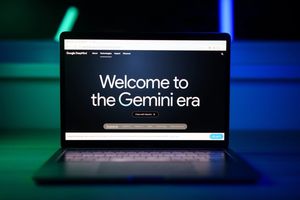
Here's the truth: documentation eats up an absurd amount of time in healthcare and professional environments. Think about it – medical professionals burn through nearly half their day on paperwork when they should be focusing on patients. Scribe apps are revolutionizing note-taking, yet here's the kicker: most users barely scratch the surface of what these tools can actually do.
When you apply the right strategies, these platforms evolve from simple transcription machines into productivity powerhouses that genuinely transform your workday.
Getting Started with Your Documentation Setup
Listen, how do you configure your documentation system on day one? That determines whether you'll love or hate the results. Way too many folks blast through setup like they're late for a meeting, then can't figure out why the output looks terrible.
Audio Quality Makes All the Difference
Where you position your microphone isn't some minor detail – it directly impacts how accurate your transcriptions turn out. You want it roughly 6–12 inches from your mouth. That is sweet spot matters. Background noise? That's enemy number one. Close your windows, kill that noisy fan, and silence your phone. Always test audio levels before anything important, particularly when you're in unfamiliar territory.
Setting Up Your Custom Vocabulary
Medical professionals know this struggle: scribe apps often wrestle with specialized dictionaries packed with industry jargon. Here's what separates smart users from frustrated ones – import your existing glossaries immediately, instead of teaching the system one word at a time. Most platforms support bulk terminology uploads, which saves you literal hours of headaches. Update these vocabularies monthly as new terms pop up in your practice. Acronyms deserve special attention because they trip up AI systems more than anything else.
Choosing the Right Recording Environment
Room acoustics? Yeah, they matter way more than you'd expect. Hard surfaces bounce sound around and confuse transcription algorithms. Stuck with lousy acoustics? Add some soft furnishings or acoustic panels. I've seen practitioners hang a heavy curtain behind their desk and watch accuracy jump immediately. The benefits of AI scribe tools become genuinely impressive once you've cleared away the environmental roadblocks that sabotage the technology.
With your foundation solid, you're ready for the advanced features that distinguish power users from casual ones.
Advanced Techniques to Maximize AI Scribe Efficiency
Basic transcription? That's barely touching what these tools can actually accomplish. Real productivity gains emerge from automation and intelligent workflows.
Template-Based Workflows Save Hours
Building structured templates for recurring document types changes everything. Medical SOAP notes, legal depositions, business meeting minutes – they all follow predictable frameworks. Create templates once, reuse them hundreds of times. Fifty-nine percent of respondents said their states had crafted guidance on the topic.
Conditional formatting that responds to content type can automate section population, slashing documentation time by half. Professionals routinely report saving 2-3 hours every single day after implementing template systems.
Real-Time Collaboration Features
Live transcription sharing with your team completely transforms collaborative work. Enable simultaneous editing during active sessions so multiple people can polish notes together. Role-based access controls safeguard sensitive data while keeping stakeholders in the loop. Configure notification systems that ping reviewers when documents need their eyes. Integration with project management platforms means action items populate your task lists automatically – no manual entry required.
Smart Commands and Shortcuts
Voice-activated shortcuts for phrases you use constantly eliminate so much repetitive typing. Program custom formatting commands that apply your preferred styles in one shot. Auto-insertion triggers for standard clauses work brilliantly in legal and healthcare contexts.
Some systems even let you construct conditional logic for smart document assembly, which honestly feels like magic when you watch it work. When you genuinely maximize AI Scribe efficiency, these automation features multiply your time savings in ways that compound daily.
Integration and Workflow Strategies
Isolated tools actually create more work, not less. Real efficiency comes from building a connected ecosystem where data flows without manual intervention.
Mobile and Remote Work Solutions
Smartphone recording actually works surprisingly well when you use proper technique. Hold your device steady and speak clearly toward the microphone. Offline mode becomes essential for those inevitable connectivity gaps – prioritize platforms that sync seamlessly once you're back online.
Tablet interfaces typically offer superior real-time editing compared to phones. Many practitioners maintain a dedicated tablet for field documentation because it hits that perfect sweet spot between portability and functionality.
Cloud Storage and Accessibility
Auto-saving to Google Drive, Dropbox, or OneDrive creates automatic backups plus version history. Intelligent folder structures maintain organization without constant manual filing.
Searchable transcription archives transform your documentation into a powerful knowledge repository. Retention and archival policies guarantee compliance while controlling storage expenses. The best AI scribe software platforms build cloud integration right in, so you're not wrestling with multiple sync services.
Security considerations become absolutely critical when dealing with sensitive professional information.
Privacy, Security, and Compliance
Getting hacked or facing compliance violations? Not worth any productivity gain, period. Protection protocols need to be non-negotiable from the start.
HIPAA Compliance Essentials
Choose providers offering Business Associate Agreements if you're touching protected health information. End-to-end encryption safeguards data during transit and at rest. Automatic PHI detection flags and protects sensitive information before it goes anywhere inappropriate. Regular security audits identify vulnerabilities before they explode into problems. Staff training on compliance requirements prevents well-intentioned team members from accidentally creating violations.
Data Encryption and Storage
Zero-knowledge encryption means even the service provider can't peek at your data. Audit trails for document access establish accountability and assist with compliance documentation. Device management policies block unauthorized access from lost or stolen equipment. Data loss prevention measures catch sensitive information before it escapes your secure environment. These protections might feel excessive until you desperately need them.
Access Control Best Practices
Two-factor authentication should be mandatory for everyone touching the system. SSO integration with your identity provider simplifies access management. IP whitelisting adds another security layer for practices handling extremely sensitive information. Incident response protocols ensure everyone knows their exact role if something goes sideways. Building these safeguards into your workflow from day one beats retrofitting them later by a mile.
Understanding your return on investment helps justify the technology and pinpoint improvement opportunities.
Measuring Success and ROI
You can't improve what you don't measure. Tracking the right metrics proves value to stakeholders and guides your optimization efforts.
Tracking Time Savings
Measure time saved per documentation task using straightforward before-and-after comparisons. Most professionals discover they're saving 40-60% of their previous documentation time.
Calculate the cost per transcribed hour versus manual methods to quantify financial benefits. Monitor staff satisfaction scores – burnout prevention carries real economic value even when it's trickier to quantify. Patient or client face-time increases often surprise people with how much more present they can actually be.
Quality Metrics That Matter
Track transcription accuracy rates over time to confirm your training efforts are paying off. Documentation completeness scores help spot gaps in your templates or workflows. Error reduction percentages demonstrate improving quality to compliance officers and administrators. Benchmark against pre-implementation baselines to showcase concrete progress. These numbers tell a compelling story when budget season arrives.
Cost Analysis and Benefits
Eliminating third-party transcription service costs typically covers your entire software investment. Administrative overhead reduction frees staff for higher-value work. Reduced overtime for after-hours documentation cuts payroll expenses. Technology stack consolidation happens naturally when one tool replaces several point solutions. The total financial picture usually looks even better than your initial projections suggested.
Making AI Scribe Technology Work for You
The benefits of AI scribe tools reach far beyond simple time savings. These systems fundamentally reshape how professionals interact with documentation, liberating mental energy for higher-value work.
Start with basic setup optimization and gradually layer in advanced features as comfort grows. Training your team thoroughly on privacy protocols protects everyone involved.
Remember that implementation is a journey, not some finish line – continuous improvement yields compounding returns. The practices embracing these technologies early are constructing competitive advantages that will matter for years ahead. Your documentation workflow deserves the same innovation and attention you bring to your core professional work.
Your Questions About AI Documentation Answered
How accurate are these tools compared to human transcriptionists?
Most systems hit 95-99% accuracy under optimal conditions. Medical and legal terminology requires custom vocabulary training. Human review remains important for critical documents, though AI handles routine transcription reliably. Accuracy improves continuously as the system learns your unique patterns.
Can these tools handle multiple speakers effectively?
Speaker diarization works well with up to 5-6 distinct voices. Larger group settings challenge most systems. Creating speaker profiles for frequent participants improves identification accuracy. Some platforms use voice biometrics for automatic recognition, which helps tremendously in recurring meetings.
Do I need constant internet connectivity?
Offline capabilities vary dramatically between platforms. Some offer edge processing that functions without connectivity. Cloud-based systems typically require the internet for transcription. Look for hybrid solutions if you frequently work in areas with unreliable coverage. Data syncs automatically when the connection returns.
Media Contact
Company Name: Getfreed
Contact Person: Liz F, MD
Email: Send Email
City: New York
Country: United States
Website: https://www.getfreed.ai/






